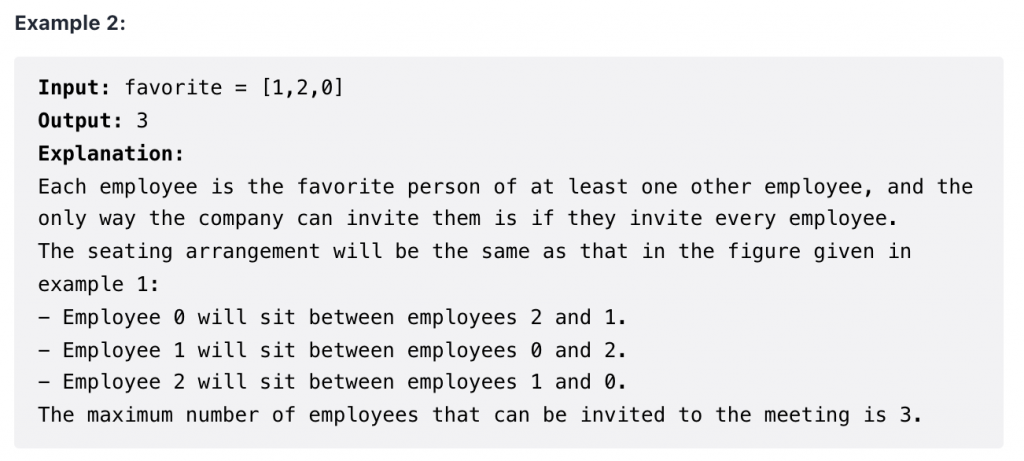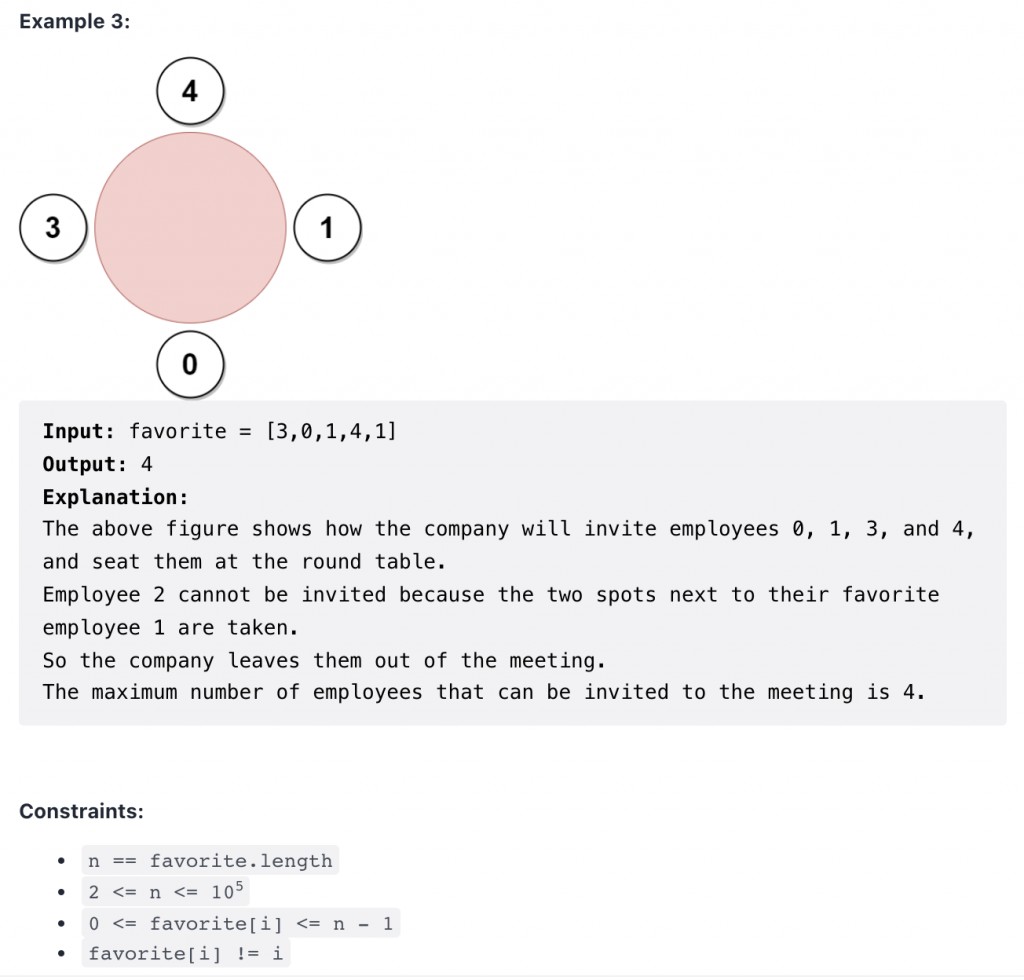Description




Submission
class Solution {
vector<int> visited;
vector<int> visited2;
vector<int> parent;
vector<vector<int>> children;
int cycleEnd = -1;
int cycleSize = 0;
int ret;
int nCycleOfTwo = 0;
void dfs(int cur) {
if(visited[cur] == 2) return;
// visiting it the second time, a cycle
if(visited[cur] == 1) {
visited[cur] = 2;
if(cycleEnd == -1) {
cycleSize = 0;
cycleEnd = cur;
}
return;
}
// not visited before
if(visited[cur] == 0) visited[cur] = 1;
dfs(parent[cur]);
if(cycleEnd != -1) ++cycleSize;
if(visited[cur] == 2) {
cycleEnd = -1;
if(cycleSize == 2) {
// take the chain length into account
fill(visited2.begin(), visited2.end(), 0);
visited2[parent[cur]] = 1;
int c1 = dfs2(cur);
fill(visited2.begin(), visited2.end(), 0);
visited2[cur] = 1;
int c2 = dfs2(parent[cur]);
nCycleOfTwo += (c1+c2);
}
else ret = max(cycleSize, ret);
}
visited[cur] = 2;
}
int dfs2(int cur) {
if(visited2[cur]) return 0;
visited2[cur] = 1;
int maxVal = 0;
for(auto child: children[cur]) {
maxVal = max(dfs2(child), maxVal);
}
return maxVal + 1;
}
public:
int maximumInvitations(vector<int>& favorite) {
ret = 0;
int n = favorite.size();
visited.resize(n, 0);
visited2.resize(n, 0);
children.resize(n);
nCycleOfTwo = 0;
parent = favorite;
for(int i = 0; i < n; ++i) {
children[parent[i]].push_back(i);
}
for(int i = 0; i < n; ++i) {
if(visited[i]) continue;
dfs(i);
}
return max(ret, nCycleOfTwo);
}
};
// 0 1 2 3
// 2 2 1 2
// for cycle size > 2, find the largest cycle
// for cycle size == 2, 2 + chain length





